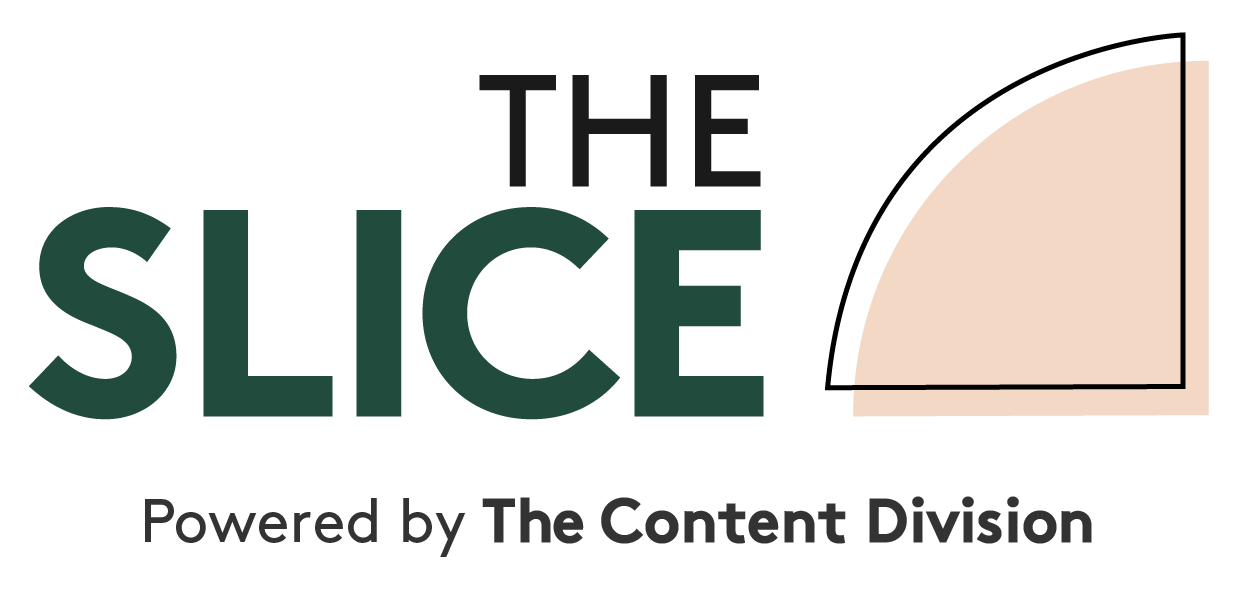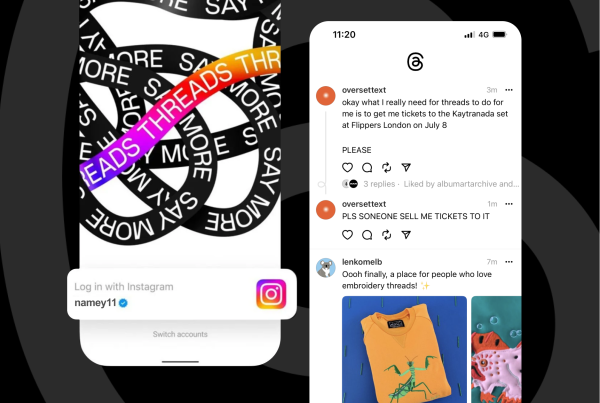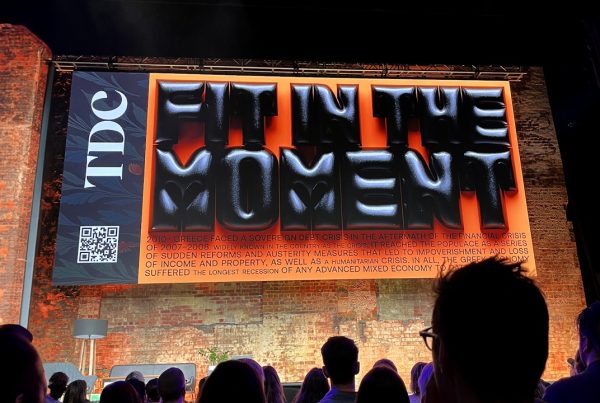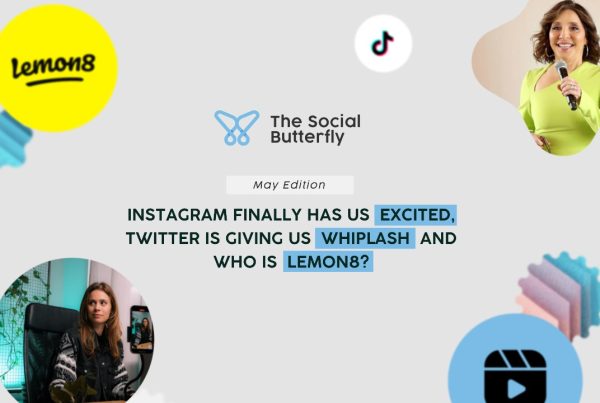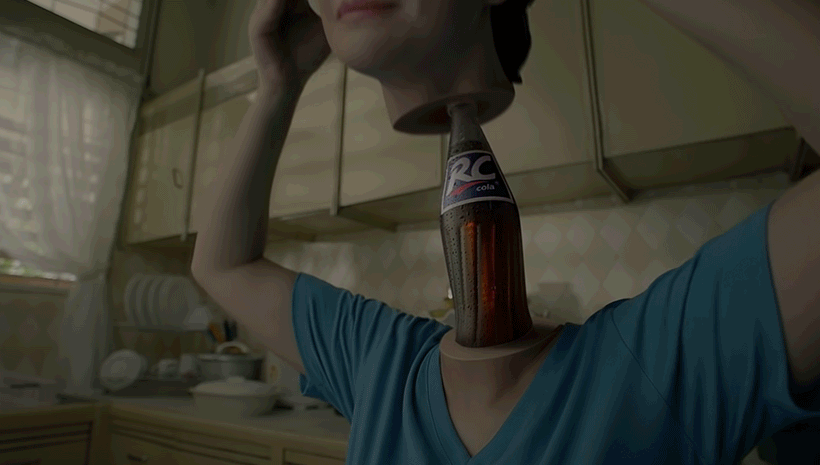
A pair of bizarre ads for RC Cola in the Philippines have baffled viewers around the world, but there’s a method behind the madness.
The first spot tells the story of a boy who confronts his mother after he is teased by his classmates about being adopted. It initially feels like a soap opera, but soon takes a Lynchian turn for the bizarre as the boy is revealed to have drinking glasses implanted in his back. The mother then removes her own head, unveiling an RC Cola bottle underneath.
And then… well, you just have to watch it for yourself.
The spot, titled Nyahahakbkxjbcjhishdishlsab@!!!! Basta RC Cola!, debuted in late November and was an immediate sensation, racking up more than 1.6 million views (all organic) within its first six hours online. After 24 hours, it had been shared 130,000 times, and had become the top-trending topic on Twitter in the Philippines.
By early December, the ad had spread beyond the archipelago, as shocked and bemused foreigners shared subtitled clips on social media, generating memes, fan art and reaction videos.
A few weeks later, the second spot debuted, focusing on a young band practicing in a garage. Suddenly, the lead singer says she feels like an outsider, and can’t continue on with the group. When her bandmates ask her to explain, she pulls off her hand, revealing an RC Cola bottle underneath.
Her bandmates are unfazed, and then reveal their own secret, which… well, you just have to watch this one for yourself, too.
The second ad gained traction even faster, becoming the top trending topic on Twitter in the Philippines within just three and a half hours of launch.
Who did this?
The bizarre ads are the creation of Gigil, one of the most decorated independent agencies in the Philippines. They won Gold at the APAC Effie Awards earlier this year for their heartwarming Levi’s Philippines spot, and were recently proclaimed Philippines Creative Agency of the Year by Campaign AOY, the first time the nod has gone to a local indie agency instead of a multinational.
Gigil is owned by creative partners Badong Abesamis and Herbert Hernandez and managing partner Jake Yrastorza, who all cut their teeth working at the multinational firms.
The agency’s name is a Tagalog word that doesn’t have an English translation, but roughly equates to passion, heart and “an overwhelming feeling of wanting to squeeze something,” according to Abesamis. “We deliberately picked a name that’s uniquely Filipino, because we wanted to be true to our culture.”
If the RC Cola ads are your introduction to Filipino advertising, rest assured that ads this bizarre are just as uncommon in the Philippines as they are in Australia. “I was talking to students from Washington recently, and they thought all Filipino ads were like this,” Yrastroza laughs. “I said, ‘No, not all ads are like this in the Philippines. We just had a client that was brave enough to greenlight these.’”
Challenge accepted
RC Cola isn’t one of the leading cola brands in the Philippines, but has traditionally carved out a niche in the market because of its comparatively low price. But when the government introduced a sugar tax last year that essentially leveled the playing field, the brand lost its competitive edge.
“The brief was to differentiate RC Cola from the competition,” Yrastorza says. “They wanted to talk to the Gen Z market, and they wanted to occupy a unique space. The other brands are into music and taste tests, so we said, ‘Why don’t you use humour?’”
“I think the risk was worth taking because they’re a challenger brand,” Abesamis adds. “They have to differentiate themselves. And with the smaller budgets they have compared to the leaders of the category, they needed something that people would want to share on social media without boosting.
“Creativity is the social fuel – ideas are the key to making people talk about a brand and making that brand sell.”
With ideas this odd, you might expect some pushback from the client, but Hernandez says that RC Cola’s head of marketing James Loverio and brand manager Clark Lee were on board from the beginning.
“I have to give props to James and Clark,” Hernandez says. “They loved the storyboards, and they just got it straight away. They’re both young, so they understood the market and they could see that this approach would connect with a Gen Z audience. They’re the ones who pushed the campaign to upper management and really went to bat for us.”
The ads, which were helmed by up-and-coming director Marius Talampas, hinge on RC Cola adopting ‘Basta’ – a Tagalog word that roughly translates to ‘whatever’ or ‘just because’ – as the brand’s new tagline.
“Gen Z lives in the moment,” Abesamis says. “The campaign comes from the insight that Gen Z don’t need a list of reasons before they decide to do something. If they feel like doing it, if it feels good and they enjoy it, they will do it. There’s no need to explain – it’s whatever.
“So we thought, in the absence of a strong position for RC Cola in the minds of Gen Z, that we could appropriate that attitude, and make the brand a mirror of the drinker.
“Anything can happen in these ads, and the endings don’t have to make sense, because, you know, whatever. Basta! That’s how Gen Z thinks.”
While the ads are deliberately random, Hernandez says there is something of a theme that runs through both of them.
“Both ads are really about acceptance and inclusion, but we didn’t want to be preachy about it,” he says. “If you just come right out and say, ‘We’re here for each other’, or ‘RC Cola promotes acceptance and inclusion’, that’s cheesy. We didn’t want to be clichéd or moralistic. Young people love their family and their friends without feeling the need to say it.”
Who dares wins
The ‘Basta’ campaign is still in its early days (yes, there are more ads coming), but Hernanedez says sales appear to be strong, with many stores completely selling out of RC stock.
“RC Cola are working on improving their distribution right now because demand is suddenly very, very high,” he says. “Our mantra is ‘high risk, high reward’. This campaign was really risky for RC Cola, but it’s also been really rewarding.”
After the success of Gigil’s Christmas campaign for Levi’s, in which a father customised a denim jacket with seemingly random studs that turned out to spell a Braille message for his blind son, brands were knocking on the agency’s door and asking them to create similarly sentimental spots for them. Now, Yrastorza says, they all want something ‘weird’ – but it’s not that simple.
“They all want us to make an RC Cola ad for them, but we won’t be doing that, because it just doesn’t work that way,” he says. “We’ll be looking at each client individually and doing something special that suits them.”
“There’s no house style,” Abesamis adds. “The common denominator in our work isn’t weird humour or heartwarming sentimentality; the common denominator is brand bravery. We make the brands speak.
“For instance, the Levi’s Philippines ad worked because we encouraged them to speak the language of a Filipino, and to move away from images of cowboys and California. The RC Cola ads work because we encouraged them to move into territory that had been missed by their competitors who were focused on more conventional advertising.
“We love working with challenger brands, because in a way, it’s easier for them to be brave. They’ve got nothing to lose. But iconic brands need to be brave, too – they need to continually reinvent themselves and make sure they’re still interesting to people, and bravery has a lot to do with that.”
